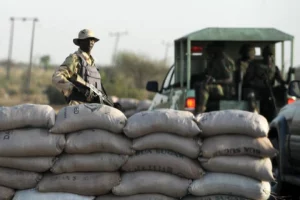China has launched a massive program to convert millions of rural Tibetans into factory workers. An initiative designed to provide loyal workers for the Chinese industry. Beijing has set quotas for the mass transfers of rural labourers within Tibet and to other parts of China.
News agency <em>Reuters</em> reports that China is pushing growing numbers of Tibetan rural laborers into recently built military-style training centers where they are turned into factory workers, mirroring a program in the western Xinjiang province. The human rights groups have branded the program as coercive labor.
As per the official website of Tibet’s regional government, posted last month, over half a million people were trained as part of the project in the first seven months of 2020. The force is around 15 per cent of the region’s population. Of this total, almost 50,000 have been transferred into jobs within Tibet, and several thousand have been sent to other parts of China. Many end up in low paid work, including textile manufacturing, construction and agriculture.
The report quoted a Tibetan researcher, who compiled the findings of the program, saying “this is now, the strongest, most clear and targeted attack on traditional Tibetan livelihoods that we have seen almost since the Cultural Revolution of 1966 to 1976’’. These are detailed in a report released this week by
the Jamestown Foundation, a US-based institute that focuses on policy issues of strategic importance, which termed it “a coercive lifestyle change from nomadism and farming to wage labour”.
According to these rights groups, moving surplus rural labour into the industry is a key part of China’s drive to boost the economy and reduce poverty. But in areas like Xinjiang and Tibet, with large ethnic populations and a history of unrest, rights groups say the programs include an outsized emphasis on ideological training. And the government quotas and military-style management, they say,
suggest the transfers have coercive elements.
The Tibetan program is expanding as international pressure is growing over similar projects in Xinjiang, some of which have been linked to mass detention centres. A United Nations report has estimated that around one million people in Xinjiang, mostly ethnic Uighurs, were detained in camps and subjected to
ideological education.
China initially denied the existence of the camps but has since said they are vocational and education centers.
In recent years, Xinjiang and Tibet have been the target of harsh policies in pursuit of what Chinese authorities call stability maintenance. These policies are broadly aimed at quelling dissent, unrest or separatism and include restricting the travel of ethnic citizens to other parts of China and abroad, and tightening control over religious activities.
In August, President Xi Jinping said China will again step up efforts against separatism in Tibet, where ethnic Tibetans make up around 90 per cent of the population, according to census data. Tibetans-in-exile, led by the spiritual leader the Dalai Lama, accused the Chinese authorities of carrying out “cultural
genocide” in the region.
While there has been some evidence of military-style training and labour transfers in Tibet in the past, this new, enlarged program represents the first on a mass scale and the first to openly set quotas for transfers outside the region. About 70 per cent of Tibet’s population is classified as rural, according to 2018 figures from China’s National Bureau of Statistics.
One policy document, posted on the website of the Nagqu City government in Tibet’s east in December 2018, reveals early goals for the plan and sheds light on the approach. It describes how officials visited villages to collect data on 57,800 labourers. They aimed to tackle “can’t do, don’t want to do and don’t dare to do” attitudes toward work, the document says. It calls for unspecified measures to
effectively eliminate lazy people.
Rural workers who are moved into vocational training centres receive ideological education what China calls military-style training. The training emphasizes strict discipline, and participants are required to perform military drills and dress in uniforms. The policy documents describe a teaching program that combines skills education, legal education and gratitude education, designed to boost loyalty to the Party.
James Leibold, professor at Australia’s La Trobe University who specializes in Tibet and Xinjiang, said “Tibetans are seen as lazy, backward, slow or dirty, and so what they want to do is to get them marching to the same beat. That’s a big part of this type of military-style education.”
The vocational skills learned by trainees include textiles, construction, agriculture and ethnic handicrafts. One vocational centre describes elements of training including “Mandarin language, legal training and political education.” Workers transferred under the programs can be difficult to trace, particularly those sent to other parts of China.
The US report concludes that the program encourages Tibetans to hand over their land and herds to government-run cooperatives, turning them into wage labourers..



















